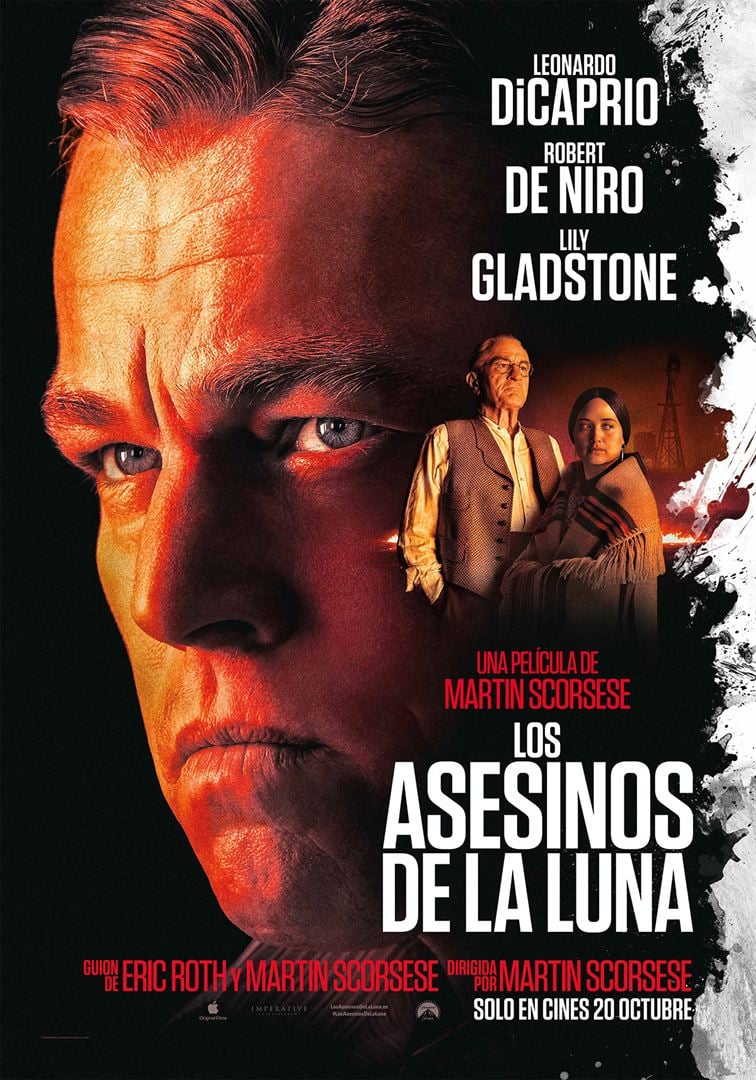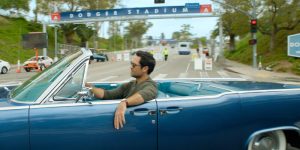
Great films know how to end with images or dialogues that, with efficiency typical of artistic genius, condense their themes or provide keys to unravel their stories. This is what happens with the two planes that close The Moon Killers. The last one is the shot from a drone that shows a ritual dance of Osage Indians. It lacks narrative articulation with the story of more than three hours that we have just seen, but it highlights to the viewer what the center of attention of the film is: the indigenous people of the state of Oklahoma and the aggressions suffered in the 1920s, now a month ago. century.
In the penultimate shot of the film, director Martin Scorsese (New York, 1942) himself appears, somewhat aged, concluding the story represented in a radio drama.. The filmmaker is present on the screen itself and, in this way, expresses his commitment to this story based on real events. It is not a cameo or a wink for Hitchcock-like film buffs: as in works of the Nouvelle Vague and, in general, of the New Cinemas, the imprint of the author implicit in the story responds to a conception of cinema as art, values ethics and ideology, at the opposite end of the Hollywood industry. The author takes responsibility for what is narrated and signs it because he is committed to its moral and historical truth.
In the gangster films that Scorsese has accustomed us to and in other antihero stories, the characters who commit crimes come covered with a certain aura: from Travis in Taxi Driverthe Rothstein of Casino and James Conway of One of oursall three played by Robert de Niro, to Jordan Belford from The wolf of Wall Street. They all are Fascinating guys, born seducers who stay with us from the first shot. This Belford (Di Caprio) exemplifies the American dream of getting rich quick thanks to the ability to manipulate the mechanisms of power. Although we are aware of their impostures, extortions and all kinds of crimes, like Don Vito Corleone, these guys exhibit an attractive personality, they are owners of a style that captivates the viewer.
But De Niro is also old Frank Sheeran, the shipper of the Irish whose rise to the top of a mafia organization was founded on steps of crimes. In that story, Sheeran is an old man sheltered in a nursing home who sees his end approaching and, therefore, aspires to forgiveness and atonement. This old and criminal played by Robert De Niro has continuity in The Moon Killers with the white chief who has been carrying out murders of Osage Indians for years to strip the indigenous nation of oil exploitation rights. His nephew Ernest Burkhart (Leonardo Di Caprio) soon learns at his side, although the marriage – initially of convenience – with one of the daughters of an Osage family with succulent economic rights seems to distance him from mafia practices.

Di Caprio himself embodied in Gangs of New York to a guy of Irish origin facing a band of native New Yorkers. This story set in the central decades of the 19th century on the East Coast now has some continuity in The Moon Killers, which takes place in the years immediately after World War I in the Midwest. Both chronicle historical events on which the United States has been built, events that reveal the struggle for power and money—with the associated crimes and plundered victims—as pillars of capitalist liberalism that has given the country its identity.
In fact, in This Martin Scorsese film delves into the history of the United States and moves through space and time to dig and expose the foundations of racism and violence that have shaped the country. The crime-money-power triad present throughout the filmography of the Italian-American filmmaker was not exclusive to a marginal sector of gangsters, but has been at the basis of white supremacy (“wasp”) since the origin of the “conquest”. of the West” in which indigenous nations are expelled from the land and confined to “reservations.”
This displacement of space and time is consistent with the mutation in the gaze towards the protagonists. The guys played by Robert De Niro and Leonardo Di Caprio have lost the glamor of the gangsters in expensive suits, they are no longer the financial wizards who dazzle the viewer. On the contrary, in The Moon Killers They have stripped off all masks to murder the members of an Osage family and even use the manipulation of feelings to subdue one of the daughters (Mollie) and, with these crimes, gain the money and power of the oil. This transformation in the moral vision of the characters – close to a Nietzschean “transmutation of values” – puts an end to any epic of gangsterism and means that the only heroism is precisely that of the excluded, deceived and dispossessed woman, the quiet and adorable Mollie. , who reveals his moral stature and intelligence with the question he asks Burkhart who shows his true falsehood, removing the mask.

Scorsese digs in the promised land and with the oil the corpses come out. He takes a trip to the origins that is also a trip to the “western”, the most unique film genre in North American cinema, equivalent to the epic poems of the European Middle Ages, founding stories of the community or country that we are. But it does not reiterate the commonplaces of the “western” nor does it rely on its recognized iconography, but rather it uses a complex narrative that amalgamates documents, false historical photos, evocations and dreams of characters, “flashbacks” and imaginary segments to build a story. genuine and dispense with any gender effect. The result is a great film in which the “pleasure of the story” typical of great narratives, and the vision of the world and the judgment of History that the masterpieces of literature, thought, theater or the opera.
The Moon Killers (Martin Scorsese, 2023) ⭐️⭐️⭐️⭐️
Source: https://www.cineenserio.com/los-asesinos-de-la-luna-origenes-del-supremacismo-blanco/


